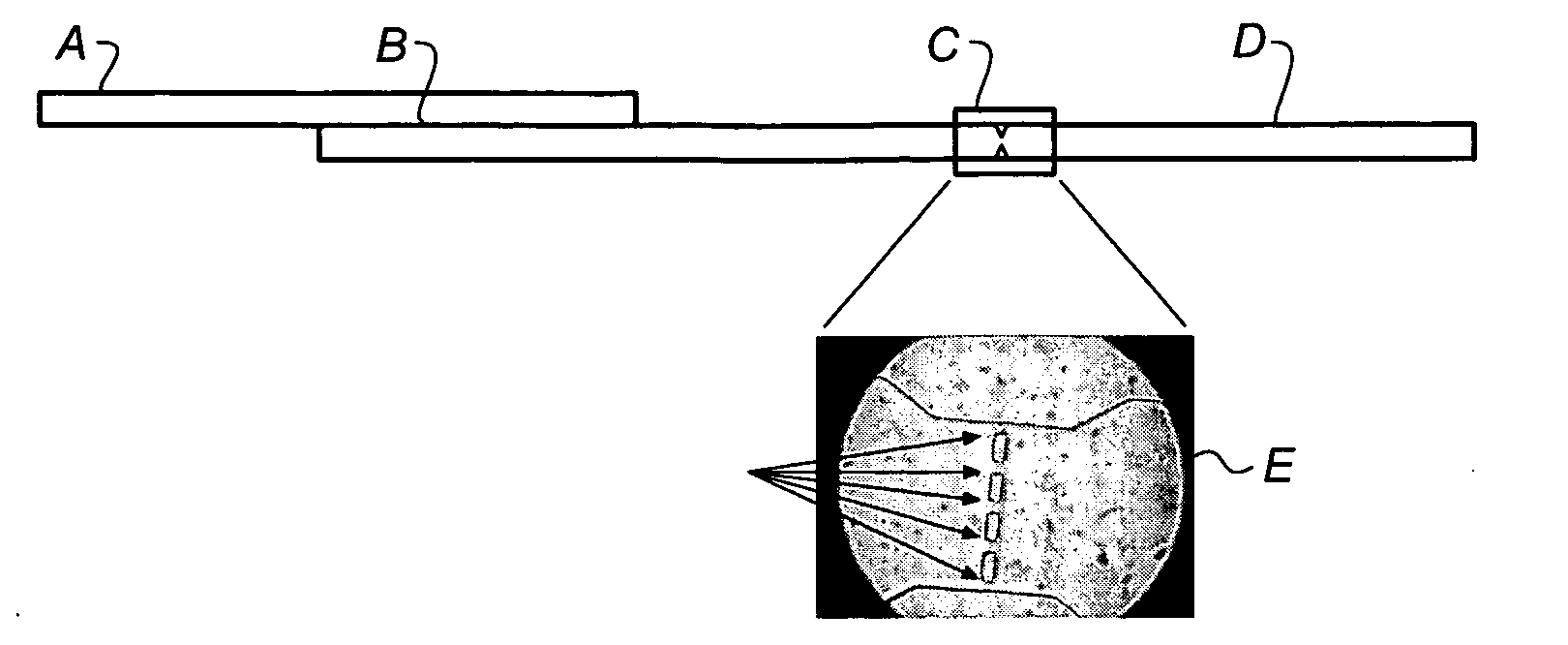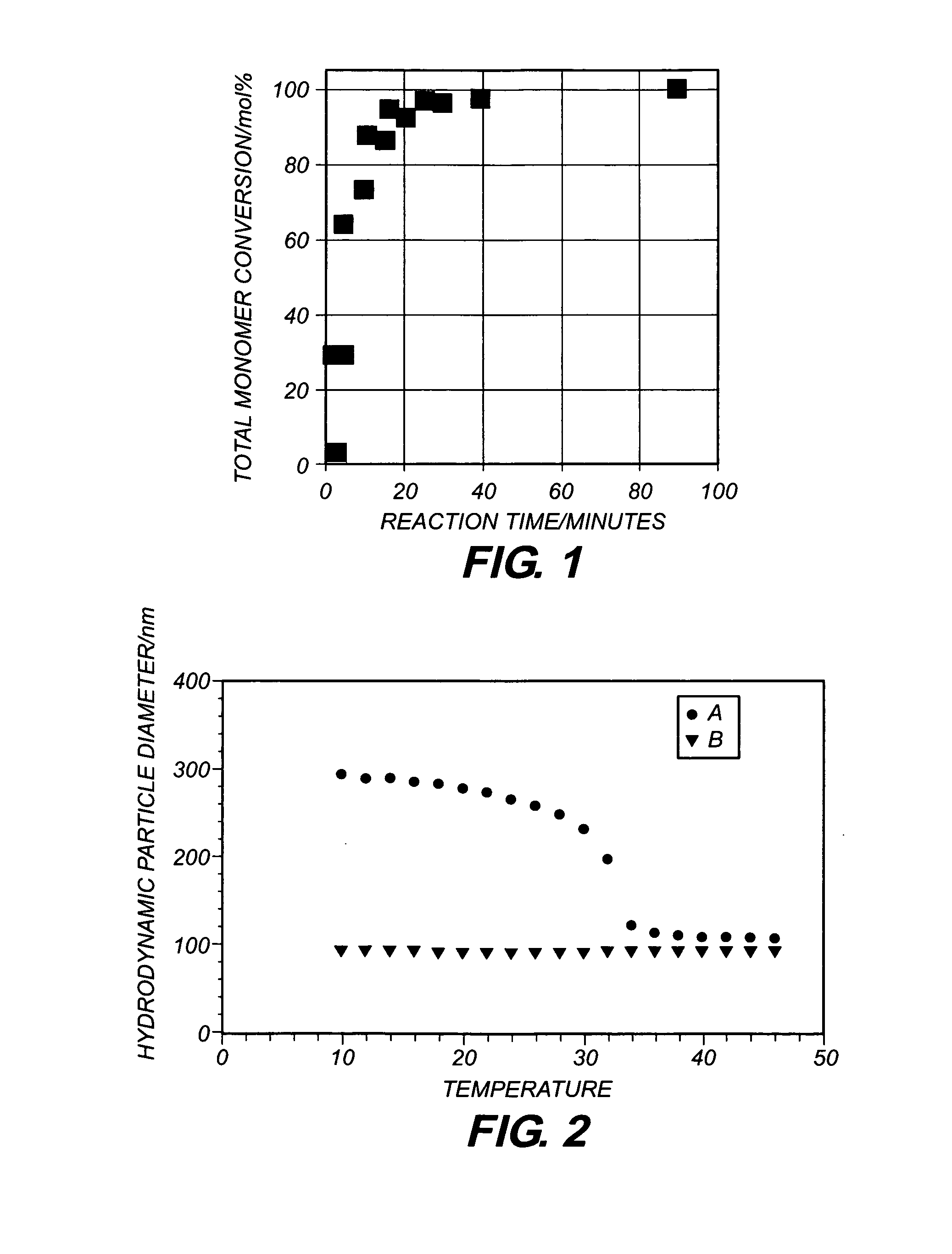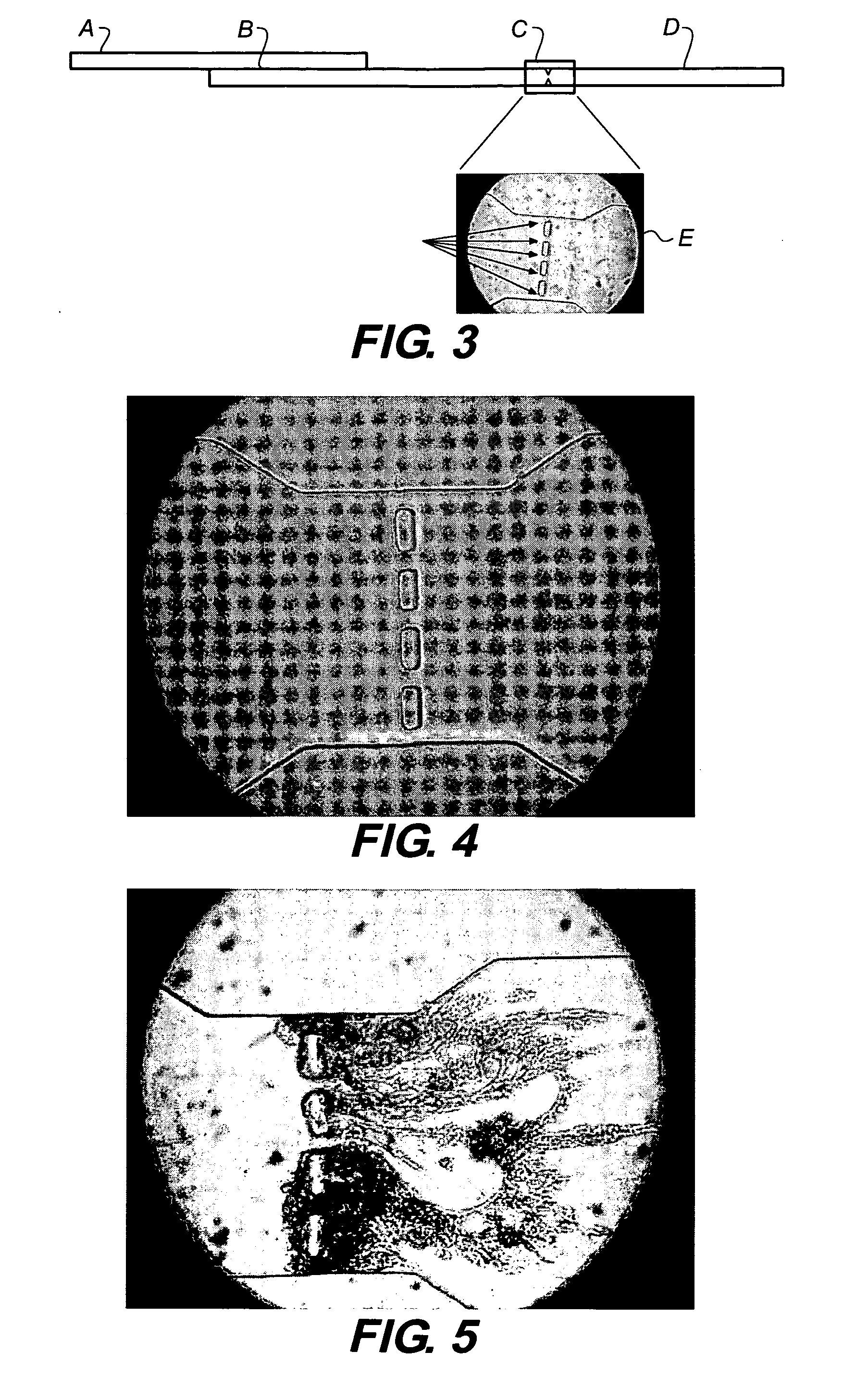Method of preparing stimulus-responsive polymeric particles
a polymer particle and stimulus technology, applied in the field of preparing polymeric compounds, to achieve the effect of improving stability in a high-shear field
- Summary
- Abstract
- Description
- Claims
- Application Information
AI Technical Summary
Benefits of technology
Problems solved by technology
Method used
Image
Examples
invention example 1
Modified PNIPAM Microgel; SDS Surfactant; 2 wt % Bis Added Before Addition of Polymerization Initiator and 30 min. Thereafter (Inv. 1)
[0083]This modified PNIPAM microgel was prepared using the same composition as the PNIPAM microgel described in Comparative Examples 2 and 6, but half of the cross-linking agent was present in the reactor prior to the reaction initiation and the second half was added in a single shot 30 min. after the reaction had been initiated.
[0084]7.9 NIPAM, 0.075 g BIS and 0.150 g SDS were added to a 1 L reactor. 450 ml water was added, the mixture warmed to 40° C. and purged with nitrogen for 30 min., while being stirred at 500 rpm. The solution was then heated to 70° C. and 0.300 g potassium persulfate initiator (dissolved in 10 ml deionized water which had been purged with nitrogen) was added quickly to the reactor. The reaction mixture rapidly became opalescent, then white. 30 min. after the addition of the initiator solution, 0.075 g BIS (dissolved in 10 ml ...
invention example 2
Modified PNIPAM Microgel; SDS Surfactant; 4 wt % Bis Added Before Addition of Polymerization Initiator and 30 min. Thereafter (Inv. 2)
[0086]This modified PNIPAM microgel was prepared using the same composition as the PNIPAM microgel described in Comparative Examples 4 and 7, but half of the cross-linking agent was present in the reactor prior to the reaction initiation and the second half was added in a single shot 30 min. after the reaction had been initiated.
[0087]7.9 g NIPAM, 0.151 g BIS and 0.150 g SDS were added to a 1 L reactor. 450 ml water was added, the mixture warmed to 40° C. and purged with nitrogen for 45 min., while being stirred at 500 rpm. The solution was then heated to 70° C. and 0.300 g potassium persulfate initiator (dissolved in 10 ml deionized water which had been purged with nitrogen) was added quickly to the reactor. The reaction mixture rapidly became opalescent, then white. 30 min. after the addition of the initiator solution, 0.151 g BIS (dissolved in 10 m...
invention example 3
Modified PNIPAM Microgel; AOT Surfactant; 2 wt % Bis Added Before Addition of Polymerization Initiator and 15 min. Thereafter (Inv. 3)
[0089]This modified PNIPAM microgel was prepared using the same composition as the PNIPAM microgel described in Comparative Example 3, but half of the cross-linking agent was present in the reactor prior to the reaction initiation and the second half was added in a single shot 15 min. after the reaction had been initiated.
[0090]15.8 g NIPAM, 0.160 g BIS and 0.903 g AOT were added to a 1 L reactor. 900 ml milli Q water was added, the mixture warmed to 40° C. and purged with nitrogen for 45 min., while being stirred at 500 rpm. The solution was then heated to 70° C. and equilibrated for 30 min. 0.604 g potassium persulfate initiator (dissolved in 15 ml milli Q water which had been purged with nitrogen) was added quickly to the reactor. The reaction mixture rapidly became opalescent, then white. 15 min. after the addition of the initiator solution, 0.150...
PUM
| Property | Measurement | Unit |
|---|---|---|
| equivalent spherical diameter | aaaaa | aaaaa |
| mol % | aaaaa | aaaaa |
| equivalent spherical diameter | aaaaa | aaaaa |
Abstract
Description
Claims
Application Information
 Login to View More
Login to View More - R&D
- Intellectual Property
- Life Sciences
- Materials
- Tech Scout
- Unparalleled Data Quality
- Higher Quality Content
- 60% Fewer Hallucinations
Browse by: Latest US Patents, China's latest patents, Technical Efficacy Thesaurus, Application Domain, Technology Topic, Popular Technical Reports.
© 2025 PatSnap. All rights reserved.Legal|Privacy policy|Modern Slavery Act Transparency Statement|Sitemap|About US| Contact US: help@patsnap.com



